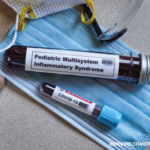
visivastudio / shutterstock.com
PRSYM 2021—Although primary COVID-19 infection has the most significant complications in adult patients, pediatric rheumatologists have also seen significant changes in their practice over the past year. With the emergence of COVID-19, the rise of a mysterious post-COVID hyperinflammatory syndrome, now known as multisystem inflammatory syndrome in children (MIS-C), was identified, and pediatric rheumatologists have played a significant role in the recognition and management of this syndrome. In addition to the challenges of MIS-C, pediatric rheumatologists have also faced managing children with rheumatic disease during the pandemic.
With these challenges in mind, Mark Gorelik, MD, and Dawn Wahezi, MD, MS, came together to discuss the pediatric rheumatology experience during COVID-19 on May 19 in a presentation titled Clinical Management of MIS-C and Rheumatic Disease During COVID.
Clinical Management of MIS-C
Dr. Gorelik, an assistant professor in Pediatric Allergy, Immunology, and Rheumatology at Columbia University Irving Medical Center, New York, and New York-Presbyterian Morgan Stanley Children’s Hospital, opened the presentation with a discussion of MIS-C. He began with a disclaimer that all of us are still learning about MIS-C and there is still very little evidence to guide management of these patients. However, the ACR has published a document, Clinical Guidance for Pediatric Patients, to help clinicians care for MIS-C patients (https://www.rheumatology.org/Practice-Quality/Clinical-Support/COVID-19-Guidance#PediatricClinicalGuidance).
One of the greatest obstacles when discussing MIS-C is the lack of homogeneity in how the diagnosis is applied in the clinical setting. Dr. Gorelik pointed out that the Centers for Disease Control and Prevention (CDC) and World Health Organization (WHO) definitions were designed to capture all cases, which may lead to over-treatment and incorrect diagnoses for some.
When reviewing published data, MIS-C definitions vary from center to center, further complicating the generalization of findings across institutions. This creates significant challenges when trying to recognize MIS-C in the clinical setting and when classifying patients for research.
In addition to varying definitions, optimal management of MIS-C has yet to be determined and differs greatly between institutions. It is currently unknown if every child should be treated with intravenous immunoglobulins (IVIG), high-dose vs. low-dose glucocorticoids and which, if any, biologics.
Dr. Gorelik highlighted two French studies, which independently demonstrated favorable outcomes in children with MIS-C who received steroids plus IVIG vs. those receiving IVIG alone.1,2 Dr. Gorelik then discussed his thought process when identifying, diagnosing and treating MIS-C, but he admitted that apart from the two French studies, this is currently an “evidence-free zone.”
One striking feature of MIS-C is that it shares many characteristics with Kawasaki disease, one of the most common forms of vasculitis in children. While reviewing the similarities, Dr. Gorelik posed a question about MIS-C: Have we really never seen this before? He then reviewed literature about Kawasaki disease complicated by myocarditis and Kawasaki shock syndrome, highlighting the manifestations and treatments of these illnesses similar to MIS-C. Ultimately, he suggested that MIS-C may be one of several hyperinflammatory syndromes that includes Kawasaki disease and Kawasaki shock syndrome.
Finally, as we reach the one-year mark for many of the initial MIS-C patients, Dr. Gorelik shared that many patients have done very well after recovery from MIS-C, providing hope for good long-term outcomes.



